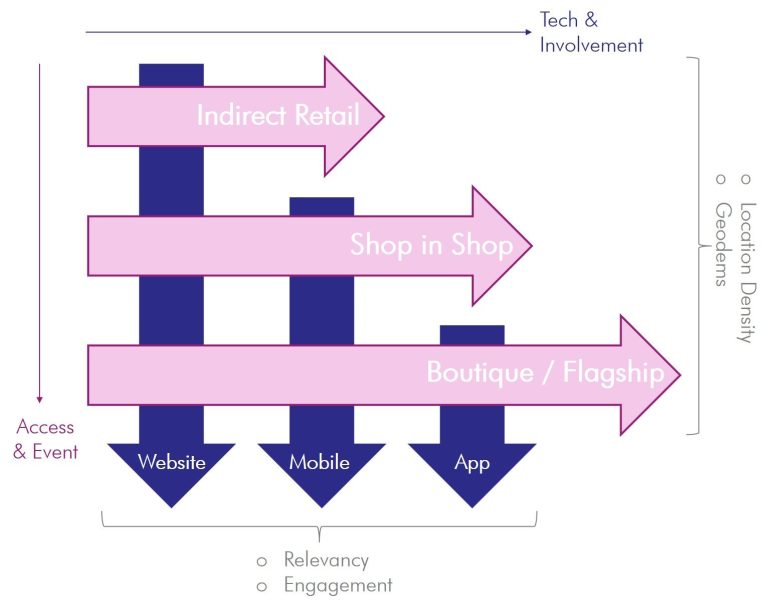Where
The 'Where' dimension looks at where the customer interacts or purchases the product/service. Basically where all the revenue occurs so key questions here are, what can we do to maintain, improve or change certain acts or habits.

Store profile
[Stand]
Clicks & Bricks. The internet may be vastly wide and deep but there is still a strong need for physical stores - albeit an evolving role.
Consider the store, sales, customer, catchment, metrics, what is selling an what isn't:
o Size: of the sales area in square feet, split by categories.
o Age: length of time open as a guide to its maturity in its location.
o Status: flagship, mall, high street, shop-in-shop.
o Product: type and mix of stock, price points, discounting, sales, returns, peak/trough months.
o Targets: gross and nett financial expectations.
o Customer profile (who) in terms of lifestage, affluence and (what) recency, frequency, value.

Store profile: Catchment comparison [Walk]
Geodemographics enable comparison with types and affluence of the perceived and actual catchment area in terms of drivetime, footfall or territory. Marketing science can provide a slew of metrics to understand the potential or problems of each location.
These characteristics can be combined into various 2x2 prioritisation grids. The bullet points are organised, Metric – Explanation - Use:
o Catchment/Market Penetration - Shows the proportion (or penetration) of local households that are currently shopping in each store - How dominant is the store in its locality?
o Remaining Opportunity - Describes the opportunity within top profile customers that is still untapped in the catchment area - What targets can be set in the short and longer term?
o Closeness Score - Shows the match between the top customer profiles and those in the local catchment area - Should the marketing or range be tweaked to fit local needs better?
o Store Customers v All Customers - Shows how similar the store’s customers are to the average company’s customer. Enables stores with particularly different customer types to be easily understood - Is it attracting different customers to the rest of the company? And who are they?
o Local Residents v Country Population - Compares the match between the local catchment area and those in the country as a whole - Is it the locality that’s different? Is it different enough to need a different range or marketing approach?
o Store Customers v Local Residents - Compares the Store’s customers with its local catchment to visualise the opportunity to market to. Shows those who aren’t shopping, who maybe should - Which profile types are shopping well? How do we communicate with those that aren’t?

Purchase channel stickiness
[Run]
Churn between competitors is one thing but customers can also change where they choose to purchase, direct via website or company store, or indirectly via retailer who stock - which many mean differences in margin and long term strategic choices.
The options are to nurture loyalty via the current channel, or persuade a change to the preferred channel, or convert from indirect channels.
Any sale is better than no sale, and customers will chose their best channel for different reasons... need the product immediately, can't receive home delivery or want to see and feel the product before purchase.
The concept of 'channel stickiness' is becoming aware of which customers are in each of the 4 quadrant and devise tactics for each:
o Keep: imprint the habit of the current choice.
o Learning new: promote the positives of the new channel and promotions to try.
o Churning from preferred: rule out any poor experiences, impulse needs or changes in lifestage. They may revert.
o Out of reach: change is slow so focus on the other 3 first. Overtime understand which of these did change and why.

We need your consent to load the translations
We use a third-party service to translate the website content that may collect data about your activity. Please review the details in the privacy policy and accept the service to view the translations.

